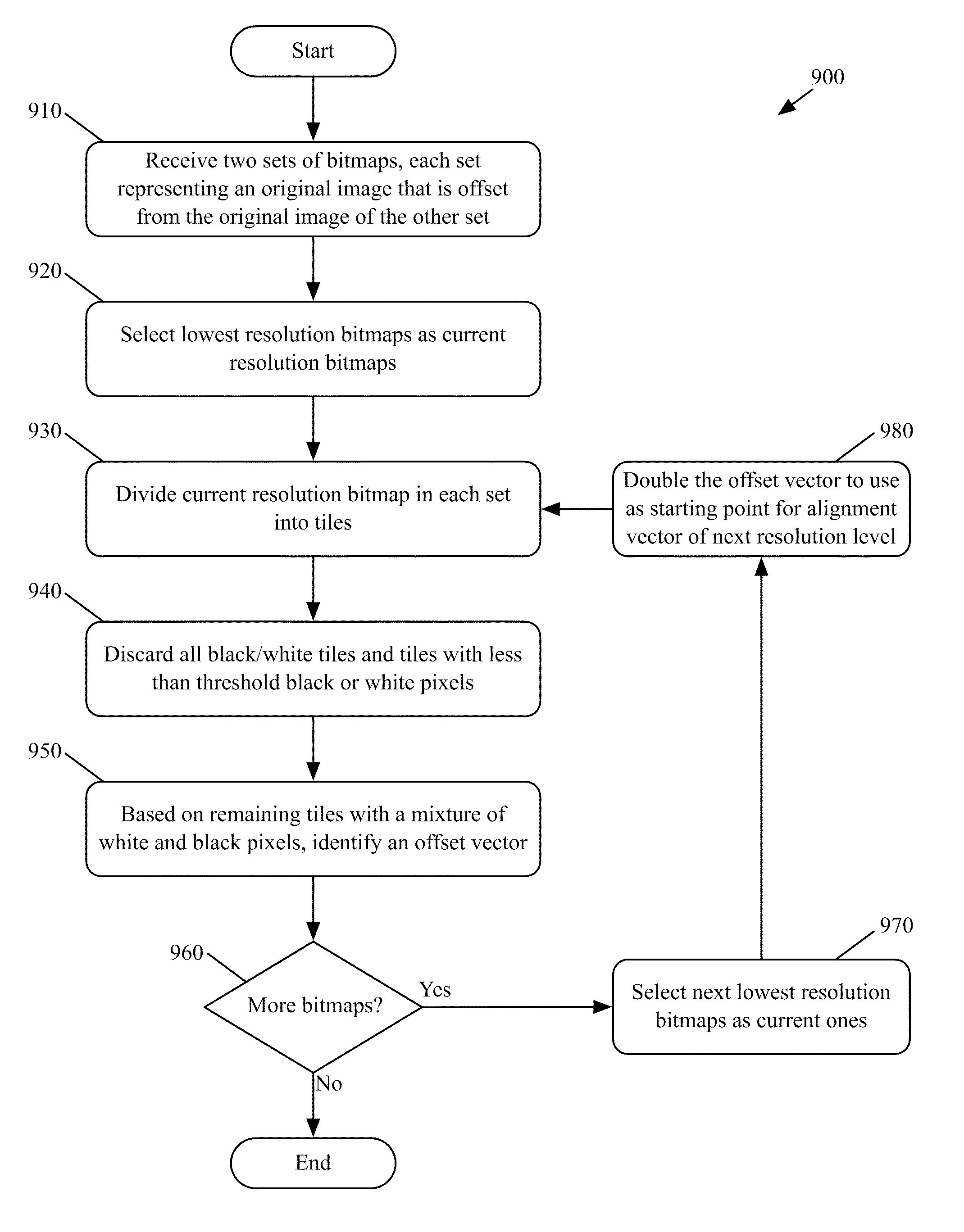Aligning images
a technology of aligning images and images, applied in the field of aligning images, can solve the problems of not being able to capture high-quality images, many cameras today still do a poor job of capturing and producing images with high dynamic range (hdr), and achieve the effect of speeding up the process for comparing tiles
- Summary
- Abstract
- Description
- Claims
- Application Information
AI Technical Summary
Benefits of technology
Problems solved by technology
Method used
Image
Examples
Embodiment Construction
[0039]In the following detailed description of the invention, numerous details, examples, and embodiments of the invention are set forth and described. However, it will be clear and apparent to one skilled in the art that the invention is not limited to the embodiments set forth and that the invention may be practiced without some of the specific details and examples discussed.
[0040]Some embodiments of the invention provide a mobile device that captures and produces images with high dynamic ranges. FIG. 1 illustrates one such mobile device 100. This mobile device can be a camera, a mobile phone, a smart phone, a personal digital assistant (PDA), a tablet personal computer (such as an iPad®), a laptop, or any other type of mobile computing device. FIG. 1 illustrates the mobile device 100 capturing a digital picture of a scene with a high dynamic range. In this scene, a person is standing in front of a window on a sunny day while a car is driving in the background.
[0041]FIG. 1 also il...
PUM
 Login to View More
Login to View More Abstract
Description
Claims
Application Information
 Login to View More
Login to View More - R&D
- Intellectual Property
- Life Sciences
- Materials
- Tech Scout
- Unparalleled Data Quality
- Higher Quality Content
- 60% Fewer Hallucinations
Browse by: Latest US Patents, China's latest patents, Technical Efficacy Thesaurus, Application Domain, Technology Topic, Popular Technical Reports.
© 2025 PatSnap. All rights reserved.Legal|Privacy policy|Modern Slavery Act Transparency Statement|Sitemap|About US| Contact US: help@patsnap.com



